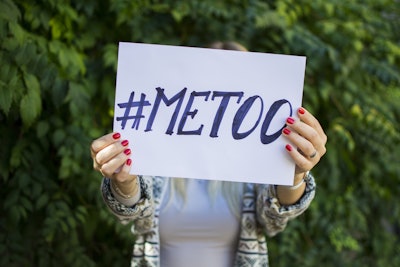
While the frequency of accusations has slowed, the tolerance for sexual harassment in the workplace has changed.
You may be thinking this doesn’t have anything to do with you or your landscape company since you aren’t some rich or famous individual who has let power go to their head, but you would be remiss to assume that sexual harassment can’t take place in your workplace.
“It’s a huge topic right now and it’s one we have to address,” says Bruce Henderson, a partner in the law firm of Phelps, Jenkins, Gibson & Fowler based in Tuscaloosa, Alabama. Henderson’s practice areas include all aspects of labor and employment law.
Employees are protected from sexual harassment as part of Title VII of the Civil Right Act of 1964, which prohibits employment discriminations based on race, color, religion, sex and national origin. This is enforced by the U.S. Equal Employment Opportunity Commission (EEOC).
In June 2016, a special task force of the EEOC issued a report that revealed, despite requiring policies and training on workplace harassment for 30 years, it is still a major problem in the workforce.
Additionally, according to the EEOC, “Roughly three out of four individuals who experienced harassment never even talked to a supervisor, manager or union representative about the harassing conduct.”
As a result, the EEOC determined that it needed to reboot its training and focus on giving real-life examples rather than legal definitions of what is considered harassment.
“Implementation of the report’s recommendations is key,” said Victoria Lipnic, EEOC acting chair and co-author of the report in 2017. “These trainings incorporate the report’s recommendations on compliance, workplace civility and bystander intervention training. I believe the trainings can have a real impact on workplace culture, and I hope employers make use of them.”
When polled, 76 percent of employees said they think their employer has a harassment policy and only 22 percent of managers said they knew their employers have a policy.
Henderson says that is it crucial for employers to ensure their employees know they have a written policy that defines what is prohibited and there is also a defined procedure for complaining about harassing behavior.
All claims should be investigated thoroughly, and appropriate steps should be taken against any employee whose behavior has been found to be offensive. The nature of the offense and how long it took place will determine whether a reprimand and additional training are all that is needed or if the employee should be terminated. Regardless of the type of disciplinary action taken, retaliation should be prohibited.
Certain states like New York and California have legislation that mandates annual sexual harassment training. In New York, employers with at least 15 employees must participate in annual training and in California, companies with five or more employees are required to conduct annual training.
Part of New York’s training includes case studies, which provide real-world situations to help workers understand how in some situations behaviors like paying someone a “compliment” can be perceived as harassment based on the victim.
For instance, if a supervisor tells a new female employee that he is glad she joined the staff because, unlike the other women in the office, she is “easy on the eyes,” this is both derogatory and demeaning. The case study explains that the supervisor’s comments are a serious matter because they show his contempt for women in the workplace.
Another example from the case studies is one where a female equipment operator is teased by her male co-workers as being a “crazy woman driver.” Henderson says that joking can be considered harassment if it is demeaning.
“It’s about whether she finds it finds it offensive,” he says. “She is entitled to complain. Banter is fine in the workplace but she can complain when a line is crossed.”
This particular case goes on to outline a situation where some of the males are resentful toward the female for working in their traditionally all-male profession, making comments like, “You’re taking a job away from a man who deserves it,” and, “You should be home with your kids.” While these comments are not sexual in nature, they are still considered harassment because the female worker is being discriminated against because of her sex.
It’s important to understand that harassment isn’t always a male harassing a female; it can also be reversed. Same-sex harassment should not be overlooked either. Sex stereotyping is another issue where individuals can be harassed for not conforming to certain people’s norms.
Managers as well have a duty to report harassing conduct that they see or hear.
“It is your duty to report it,” Henderson says. “It is the absolute worst thing to ignore it.”
Companies also have a responsibility to take action for behavior conducted after hours, such as stalking or sexting, as these behaviors have an impact on the workplace.
“Sometimes, leaders need to take hard lines,” Henderson says. “We’ve got to take prompt and effective action.”










